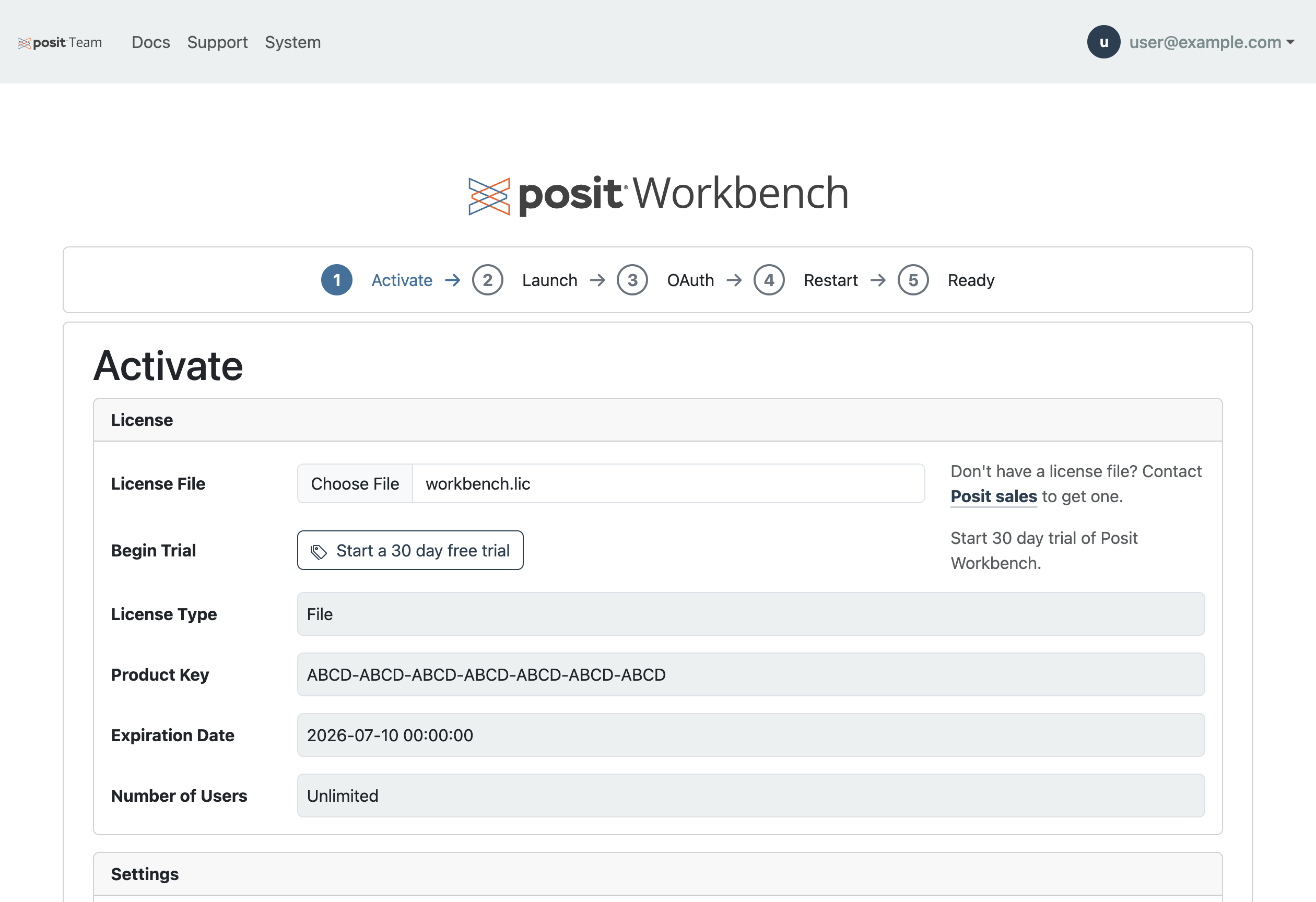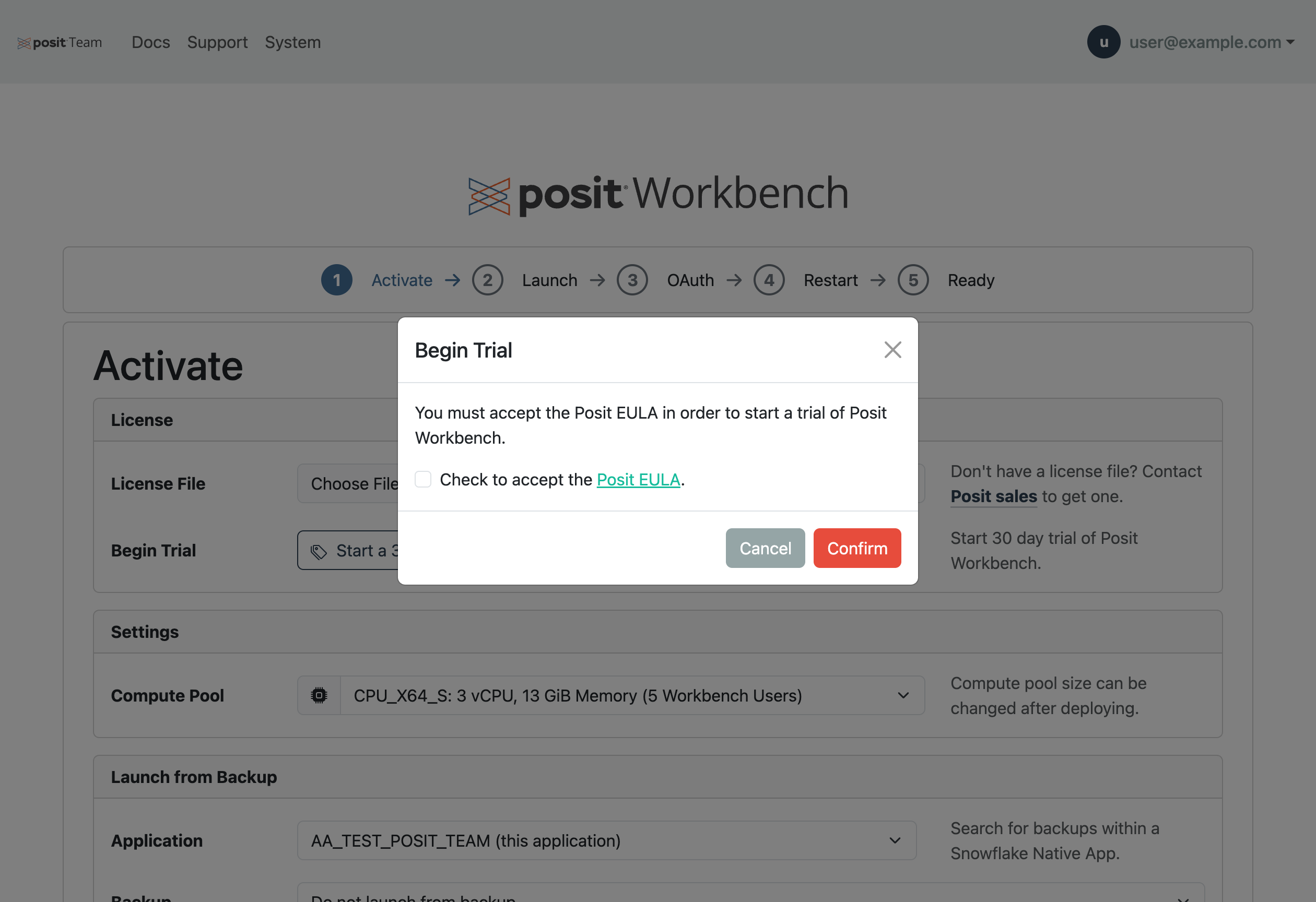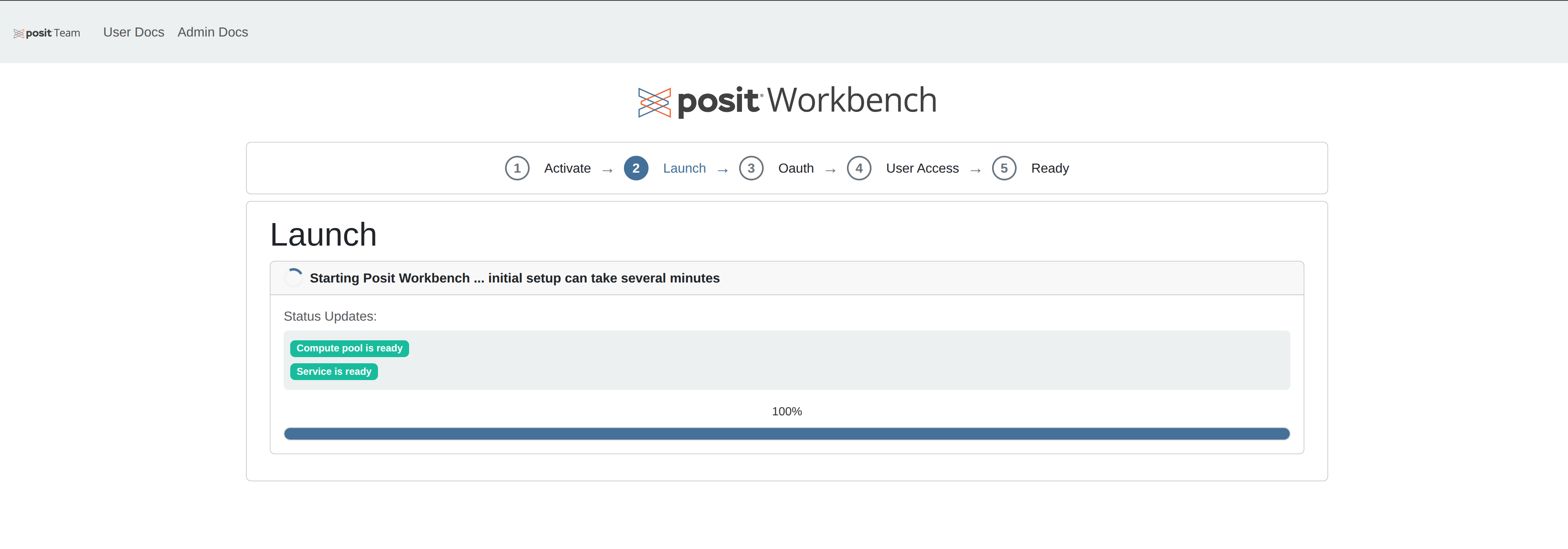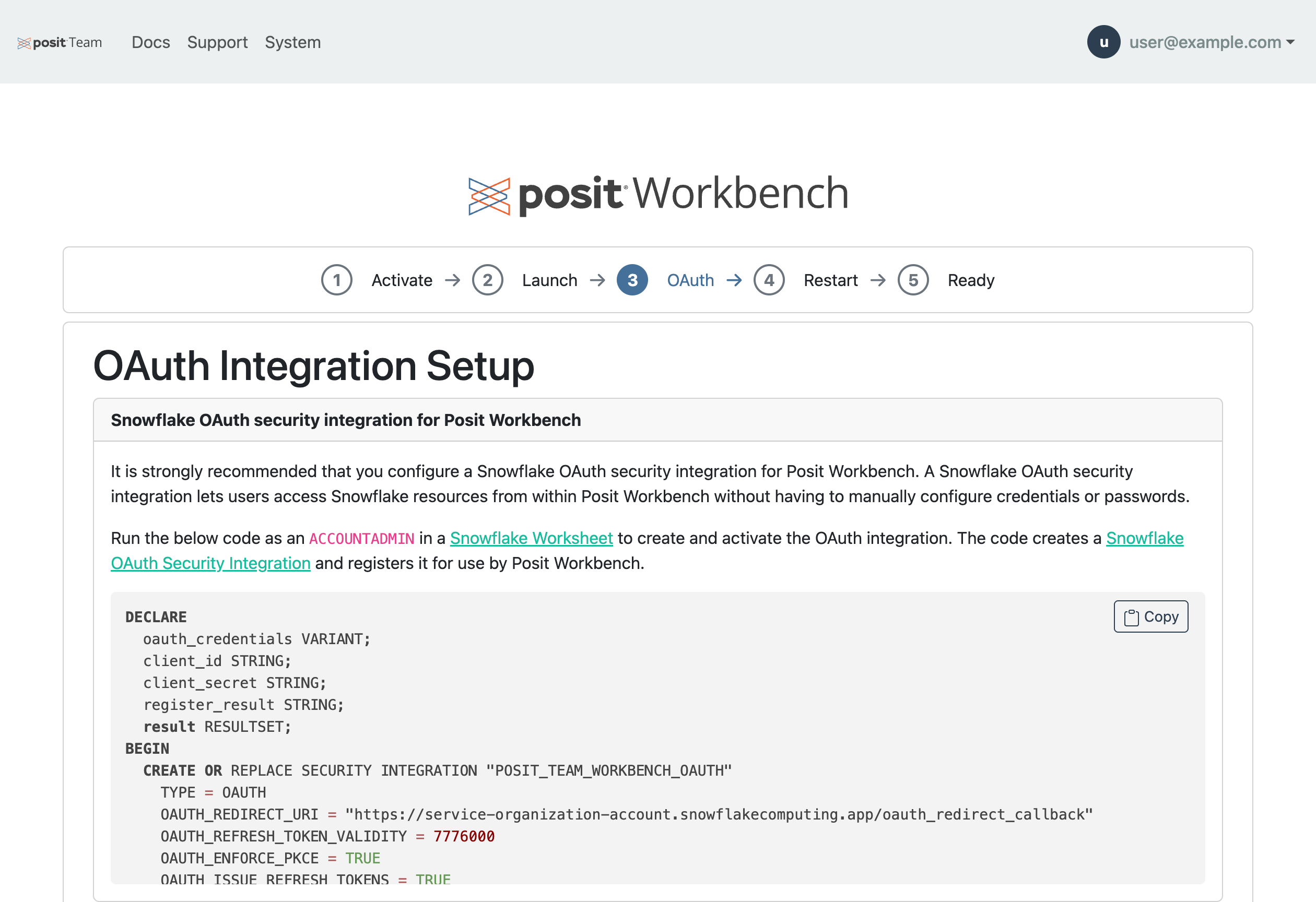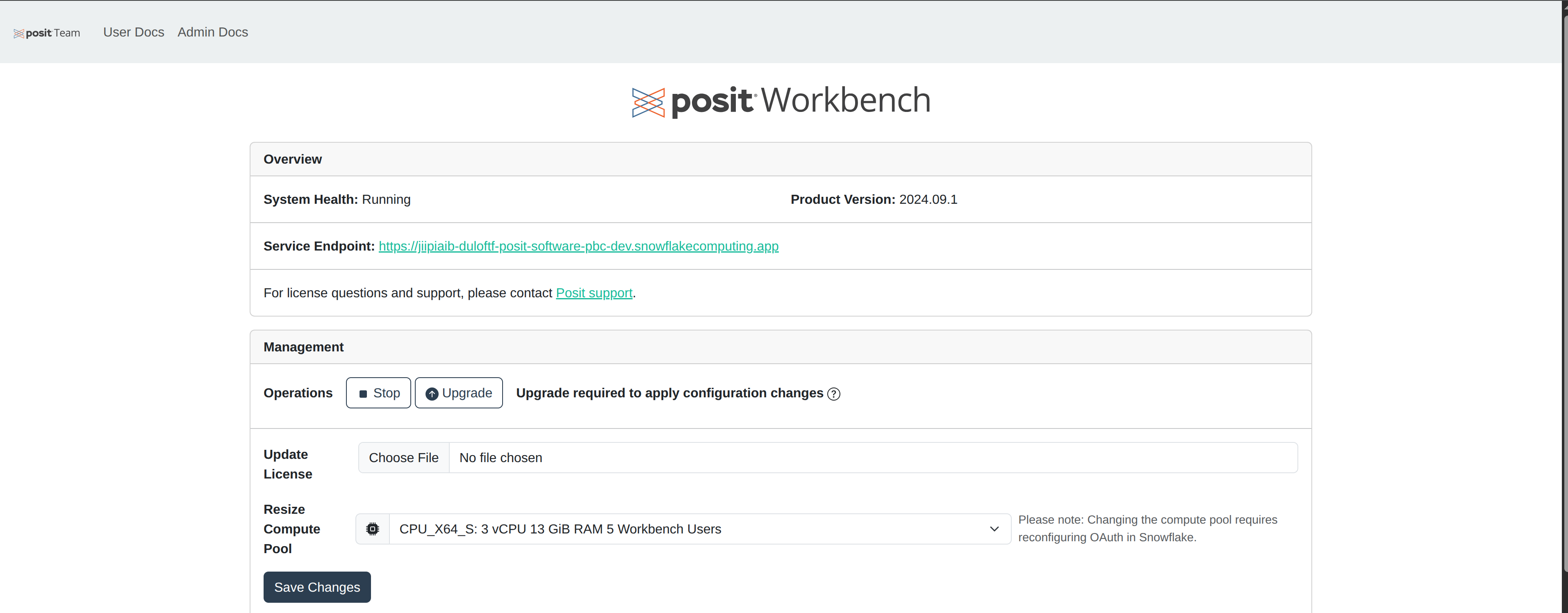Setup of Workbench
Setup Guide
If Workbench is not already configured from the landing page and running, click on the Posit Workbench logo.
Workbench setup requires application roles POSIT_TEAM_ADMIN or POSIT_WORKBENCH_ADMIN. See top right corner to see your permissions. If you originally installed the Native App you will have all roles.
Configuration
License
Posit Workbench requires a valid Advanced license file. If you think you have a valid license file just upload via the file input and it will be validated. If you don’t have a license file please contact Posit sales.
Alternatively, Posit Team supports a free 30-day trial of Workbench that you can start by clicking the Get a free trial license button. A modal will appear asking you to agree to the Posit EULA. You will need to contact sales (snowflakemarketplace@posit.co) to purchase a license before the 30-day trial expires to continue normal operation of Workbench.
Compute pool
The compute pool size you choose is dependent on how you plan to use your instance of Workbench.
For a small team (3-5 users) use at least a small (CPU_X64_S) compute cluster. To better understand your team’s needs, we recommend starting with a size slightly larger than you may need (which avoids OOM errors), monitoring the resource usage, and then adjusting your compute cluster size accordingly.
Once you click continue, Workbench will begin to provision. This will take roughly 10 minutes to create the compute pool and start the Workbench container. The compute pool size can be resized later as well, taking about 15 minutes.
Using backups from another Posit Team Native App
You can launch Posit Workbench within the Posit Team Native App using a previously created backup. Backups from another installation of the Posit Team Native App are supported.
The target Posit Team Native App needs to be granted the POSIT_TEAM_ADMIN application role in order to enumerate and access the backups associated with your source Posit Team Native App.
Assuming that your source Posit Team Native App is named POSIT_TEAM_SOURCE and your target Posit Team Native App is named POSIT_TEAM_TARGET, run the following Snowflake SQL to grant access:
Snowsight UI
GRANT APPLICATION ROLE POSIT_TEAM_SOURCE.POSIT_TEAM_ADMIN TO APPLICATION POSIT_TEAM_TARGET;After running this code, you can ask that backups from POSIT_TEAM_SOURCE be used when launching Workbench in the Posit Team Native App named POSIT_TEAM_TARGET.
Snowflake Managed Credentials
It is strongly recommended that you configure a Snowflake OAuth security integration for Posit Workbench. A Snowflake OAuth security integration lets users access Snowflake resources from within Posit Workbench without having to manually configure credentials or passwords. For more details see the official Workbench docs on Snowflake managed credentials.
To create and activate the OAuth integration click the Copy button on the SQL generated in the Workbench OAuth setup step and run it in a Snowsight Worksheet with ACCOUNTADMIN credentials.
Next, click Continue. This will restart Workbench with these credentials and it will be available in 3-4 minutes. Or click Skip to skip the integration and continue with setup.
Ready
Once Workbench is fully configured and ready, you are redirected to the product management page.
Click on the “Service Endpoint” to be taken to Workbench.
Users will typically access Workbench from the landing page.

